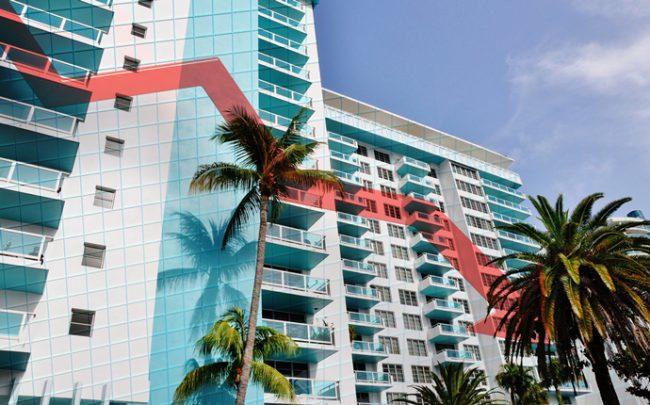Trending
Surge of hotel development leads to declines in occupancy, revenue in South Florida
STR data shows that South Florida hotels had about 3,600 more rooms available in the first half than in the same period last year

South Florida hotel occupancy rates fell slightly in the first half of the year as the supply of rooms increased faster than bookings, recently released data shows.
“It’s positive to see that more people traveled here … It’s just that hotel developers are building too many rooms, for now,” Paul Weimer, a Miami-based senior vice president of CBRE said.
Research by hotel industry monitor STR shows the tri-county inventory of South Florida hotel rooms increased by 3,668 in the first half, a 3.5 percent increase, compared to the same period of last year.
But first-half revenue per available room was lower than last year across the tri-county area, dropping by 2.4 percent to $174 in Miami-Dade, by 3.7 percent to $130 in Broward and by 0.6 percent to $164 in Palm Beach County.
A surge of hotel openings around Miami International Airport and in South Miami has depressed revenue per available room in these Miami-Dade submarkets, where “demand has not kept pace with supply,” Weimer said. But hotel operators are collecting more revenue per room in Miami Beach, downtown Miami and other submarkets, he said.
The Miami Downtown Development Authority issued research earlier this year showing that the number of hotel rooms planned and proposed would more than double the existing supply of 8,121 rooms in Brickell, downtown Miami, the Arts & Entertainment District, Edgewater, Midtown, Overtown and Wynwood.
“There’s a lot of [hotel room] inventory coming into the market, both in Broward and Dade County,” said Steven Marin, a partner of Miami-based Travelers Hotel Group, which is building a Comfort Inn and Suites in Miami Springs, just north of Miami International Airport.
“The entire market is feeling some sort of a little dip … Supply has something to do with it,” Marin said. “But the Miami market is still strong compared to other parts of the country, and still growing.”
Miami-Dade, Broward and Palm Beach County each had lower occupancy rates in the January-June period than in the same period last year, according to Henderson, Tenn.-based STR, formerly known as Smith Travel Research.
First-half occupancy rates ranged from 79.8 percent in Miami-Dade (down 1.6 percent from the first half of 2018) and 79.5 percent in Broward (down 1.2 percent) to 76.5 percent in Palm Beach County (down 2.2 percent).
Average daily room rates during the first half were lower than last year in Miami-Dade ($218, down 0.8 percent) and Broward ($164, down 2.5 percent) but slightly higher in Palm Beach County ($214, up 1.6 percent).
While a bigger inventory of hotel rooms weighed on Miami-Dade room rates and hotel occupancy in the first half, so did comparisons with the unusually strong first half of 2018, when local hotels were packed with contractors working on South Florida’s recovery from Hurricane Irma in September 2017.
“We really did benefit from Irma. We got a lot of business from the Caribbean,” where the hurricane closed many hotels, said Wendy Kallergis, president and CEO of the Greater Miami and the Beaches Hotel Association.
STR figures show Miami-Dade hotels sold 8.3 million room-nights in the first half of 2019, a 2.6 percent increase from last year, and the hotels had an inventory of 10.4 million room-nights available, 4.3 percent more than in the first half of 2018.
Broward hotels sold 4.6 million room-nights in the first half, up 3.3 percent from the same period last year, and had 5.8 million available, 4.6 percent more than last year.
First-half sales of room-nights dipped 0.9 percent to 2.3 million in Palm Beach County, which had 3 million available, up 1.3 percent.




